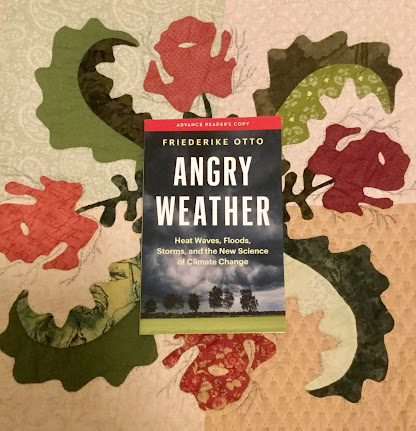The "Shakespearean tragedy" of the Kennedy family is experienced through this youngest son. The most affable Kennedy, the pleaser, the people person, the least son, inherited a heavy mantle.
When President Kennedy was assassinated, Bobby took up his cause and legacy, grew into the liberal leader role with a heightened moral awareness. And when Bobby was assassinated, it was up to Ted to finish their work, and he became the liberal lion of the Senate, the moral consciousness of America politics.
Neal Gabler's biography Catching the Wind reads like a epic poem, the flawed hero doing battle for the least and the lost. The story is a tragedy, the hero's fatal flaws bringing his downfall, but in this story, the hero gets up over and over to take up the sword once more.
This volume delves deeply into the Kennedy family character and history as the formation for the development of the children.
Finding his way to the Senate, Ted found his place in life, but the pressure to run for the presidency was both a siren call and a warning. Ted was sure he would be the target of one more assassin's bullet.
Ted was a workaholic, and a drinker, and he had girlfriends and a wife who felt lost and, like her parents, resorted to alcohol. Then there was the encounter with the bridge on an island that gave his enemies the weapon they needed.
Liberalism has been under attack for most of my adult life. I embraced it since mock voting in junior high; a classmate explained that Goldwater was a hawk and LBJ wanted to end poverty. My faith and my politics embraced the values of fighting for the meek and the weak and the downtrodden and the stranger and the impoverished.
Following Ted Kennedy's career, Garbler shows how racism and fear led to the rise of 'law and order' after the social unrest of the 1960s, the anti-war and black rebellions in the cities.
I lived through much of this history, my first awareness of politics coming with John Kennedy's presidential run, Ted's nightmare Chappaquiddick occuring when I was in college, the Watergate break-in carried out on my wedding night.
As a teenager I was resentful of these conflicts and the pressure to politicize my life when all I wanted was to 'grow up'. I was also sympathetic, for I had seen the inner city and the racism espoused by working class neighbors. I was too naive to understand the racist implications of 'law and order'. And as I entered young adulthood, I watched in dismay as liberalism was abandoned by Americans.
Joe McCarthy's fear-mongering populism, Nixon's deep hatred of all persons Kennedy leading to his dirty tricks, and the fact that America ultimately rejected them, brings some hope that we can and will do so again.
I can not wait for Garbler's second volume. I usually read several books at a time, but I was so immersed in Catching the Wind I could not read anything else.
I received a free ebook from the publisher through NetGalley. My review is fair and unbiased.
The epic, definitive biography of Ted Kennedy—an immersive journey through the life of a complicated man and a sweeping history of the fall of liberalism and the collapse of political morality.
In the tradition of the works of Robert Caro and Taylor Branch, Catching the Wind is the first volume of Neal Gabler’s magisterial two-volume biography of Edward Kennedy. It is at once a human drama, a history of American politics in the late twentieth and early twenty-first centuries, and a study of political morality and the role it played in the tortuous course of liberalism.
Though he is often portrayed as a reckless hedonist who rode his father’s fortune and his brothers’ coattails to a Senate seat at the age of thirty, the Ted Kennedy in Catching the Wind is one the public seldom saw—a man both racked by and driven by insecurity, a man so doubtful of himself that he sinned in order to be redeemed. The last and by most contemporary accounts the least of the Kennedys, a lightweight. he lived an agonizing childhood, being shuffled from school to school at his mother’s whim, suffering numerous humiliations—including self-inflicted ones—and being pressed to rise to his brothers’ level. He entered the Senate with his colleagues’ lowest expectations, a show horse, not a workhorse, but he used his “ninth-child’s talent” of deference to and comity with his Senate elders to become a promising legislator. And with the deaths of his brothers John and Robert, he was compelled to become something more: the custodian of their political mission.
In Catching the Wind, Kennedy, using his late brothers’ moral authority, becomes a moving force in the great “liberal hour,” which sees the passage of the anti-poverty program and the Civil Rights and Voting Rights Acts. Then, with the election of Richard Nixon, he becomes the leading voice of liberalism itself at a time when its power is waning: a “shadow president,” challenging Nixon to keep the American promise to the marginalized, while Nixon lives in terror of a Kennedy restoration. Catching the Wind also shows how Kennedy’s moral authority is eroded by the fatal auto accident on Chappaquiddick Island in 1969, dealing a blow not just to Kennedy but to liberalism.
In this sweeping biography, Gabler tells a story that is Shakespearean in its dimensions: the story of a star-crossed figure who rises above his seeming limitations and the tragedy that envelopes him to change the face of America.




























































